Month: September 2015
-
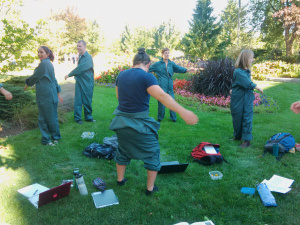
Exciting Times Outside
So today was our first reading as a class outside, and it started off with a bang because our amazing jumpsuits of awesome nature-ness arrived today!! Nathan also presented a very useful survival tip; how to shoot in the sun.
Our little reading spot was pretty fantastic. It was very nice and relaxing in the gardens as we discussed some pretty heavy questions surrounding the roles of art and artist when it comes to issues surrounding the planet’s well-being. Is it the artist’s job to bring the problems regarding climate change to light and be the hero? Maybe it is? As we discussed, art has a way of narrowing down the meaning of “climate change” in pretty creative ways. And we stretched…who doesn’t like a good stretch?
-
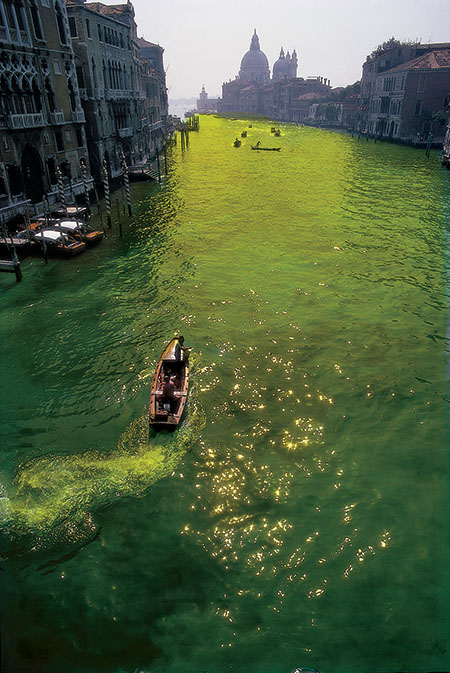
Olafur Eliasson – Green River

Tokyo 
Venice In 1998, Olafur discovered that uranin, a readily available nontoxic powder used to trace leaks in plumbing systems, could dye entire rivers a sickly fluorescent green. Olafur conducted a test run in the Spree River during the 1998 Berlin Biennale, scattering a handful of powder from a bridge nearMuseum Island. He began introducing the environmentally safe dye to rivers in Moss, Norway (1998), Bremen (1998), Los Angeles (1999), Stockholm (2000) and Tokyo (2001) — always without advance warning.
-
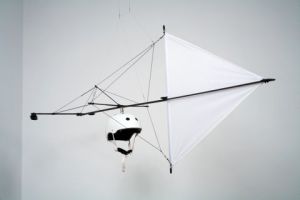
Wanderlust: Tim Knowles
Wanderlust is a solo show by Tim Knowles, exploring the concepts of endeavour and challenge.
The artist’s creative practice incorporates chance operations and performance. For his Windwalks and Nightwalks Tim Knowles acts as a contemporary flaneur, moving about the city and countryside via an unusual self-imposed set of rules. Akin to scientific experimentation, the results of the project are unpredictable and outside his control. For all its verve, there is something unnervingly lonely about Tim Knowles’ work.

video still from Nightwalks
In one of his Windwalks Tim Knowles set off from central London guided solely by the wind. For this piece he created an extraordinary-looking wind vane mounted to a helmet. His steps were dictated by the wind and traced with a GPS device. He documented the nocturnal city life he saw with a video camera.
The walks took place in the early hours of the morning, when the streets were quieter, and some nights were more chaotic than others. Whirling air currents bounced off buildings and lead the artist into a cul-de-sac of littered plastic bags and swirling leaves with no escape until the wind once again changed its direction.
The Nightwalks are a series of illuminated walks that Tim Knowles created in the countryside during a new moon. Over the period of an hour, the artist walked away from the camera while carrying three wide-beam torches. His path, along a precarious rocky ridge in the darkness, was illuminated and captured using a long-exposure, large-format photograph. The image invokes Plato’s allegory of the cave, appearing like a pathway of ghostly travellers shining inside an electrified landscape.
http://www.plymouthartscentre.org/art/archive1/2009/wanderlust-tim-knowles.html
-

Examples of photography in the middle of the day
(These pictures have not been altered from the way they were shot, to focus on how the lighting will change with your surroundings.)
(As a learning experience, I would invite you all to take a picture in three different light situations: 1 in the morning as the sun is rising, 1 in the middle of the day with the sun up high, and a third with the sun setting or having just set. You will learn a lot about photography by doing just these three photos. – Nathan)
Here we all are. Happy friends, fellow classmates. You all are evenly lit for the most past. But check out that hot spot on Sonali’s head. Good luck fixing that!
Also, check out how overexposed the background is. Pay attention to your background!
Ah the wonders of direct lighting! Hot bright foreheads and nice deep shadows under the eyes, chin and nose keep everyone from being easy to look at. Even more enticing, look at the nice shadows that branch makes on the people to the left of it. You can barely tell what they look like!
Another picture in partially shaded scene. Look how bright Diane’s face is. You will spend hours and hours joyfully trying to fix that in Photoshop.

Here’s a shot of Andrea with her back to the sun. This would normally look a lot worse, but there was a nice bright sidewalk under her, giving a little bounced light to brighten her up.
Here she is with a reflector – too much, too much! Maybe that reflector should be pulled back a bit. I think this is the gold one.
Here’s one that looks pretty good – the reflector is back a little further. Check out the action shot in the background! This is why you might want to use a high shutter speed!
Here is our photogenic Andrea looking happy to be part of a photo demo. Can you see any harsh shadows under her face? No? That’s because we have a nice reflector in front of her.
A shot with the white diffuser in front of the sun, making the light on Andrea soft and balanced. This gives the nicest light of all. The only problem is that background is way too overexposed. Looks like a job for Photoshop!
-
Kent Monkman
Kent Monkman is a Canadian artist of Cree ancestry who works with a variety of mediums, including painting, film/video, performance, and installation. He has had solo exhibitions at numerous Canadian museums including the Montreal Museum of Fine Art, the Museum of Contemporary Canadian Art in Toronto, the Winnipeg Art Gallery, and the Art Gallery of Hamilton. He has participated in various international group exhibitions including: The American West, at Compton Verney, in Warwickshire, England, Remember Humanity at Witte de With, Rotterdam, the 2010 Sydney Biennale, My Winnipeg at Maison Rouge, Paris, and Oh Canada!, MASS MOCA. Monkman has created site specific performances at the McMichael Canadian Art Collection, The Royal Ontario Museum, and at Compton Verney, he has also made Super 8 versions of these performances which he calls “Colonial Art Space Interventions.” His award-winning short film and video works have been screened at various national and international festivals, including the 2007 and 2008 Berlinale, and the 2007 Toronto International Film Festival. His work is represented in numerous public and private collections including the National Gallery of Canada, Montreal Museum of Fine Arts, Museum London, The Glenbow Museum, The Museum of Contemporary Canadian Art, The Mackenzie Art Gallery, the Art Gallery of Ontario, the Smithsonian’s National Museum of the American Indian and the Vancouver Art Gallery.Taxonomy of the European Male:Performance — 2005
Compton Verney, Warwickshire, UKMiss Chief recruits two European Males as specimens in her ongoing study of the European male in his natural habitat. Unwittingly she has stumbled upon Robin Hood and Friar Tuck who, after a contest of bows and arrows and a little figure modeling, prove to be more than she can handle.
-
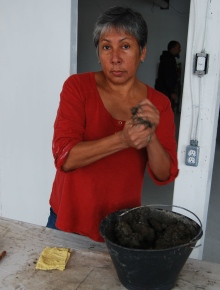
Rebecca Belmore
Rebecca Belmore is a multi-disciplinary Canadian artist born in Upsala, Ontario and is currently living in Vancouver, British Columbia. Her work addresses identity, place and history with the use of mediums like sculpture, installation, video, and performance. She is recognized internationally for her performance and installation work.
For more information about Rebecca Belmore click here
These images display Belmore using the clay dug up from Red River Valley to create “clay beads” which will be strung together to create a large blanket with folds. Thousands of hand-pressed clay beads will be created and the idea is supposed to reflect earth, water and sky.
Rebecca Belmore says, regarding this work: “‘So if you put fire, earth and clay together, you get ceramics…revisiting this idea of human beings that have always used the earth to make objects that were functional to them, to us…therefore this work is…about our human relationship to the land’”
Full article featuring this work and some of Belmore’s other works visit this link
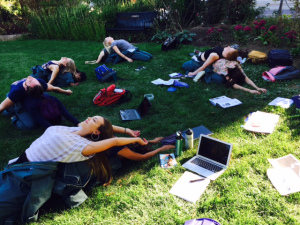





















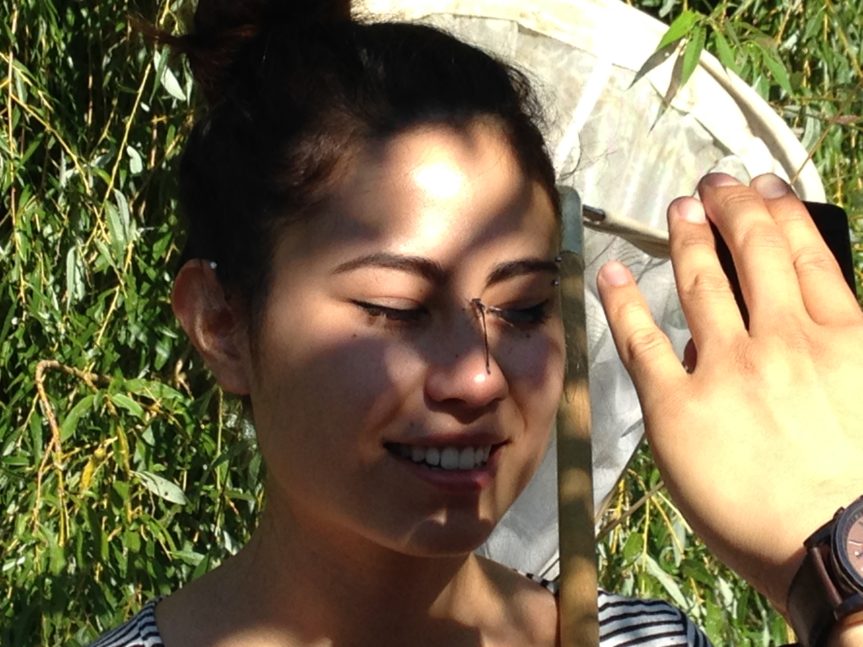







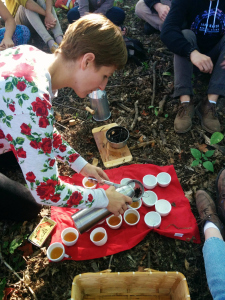









You must be logged in to post a comment.